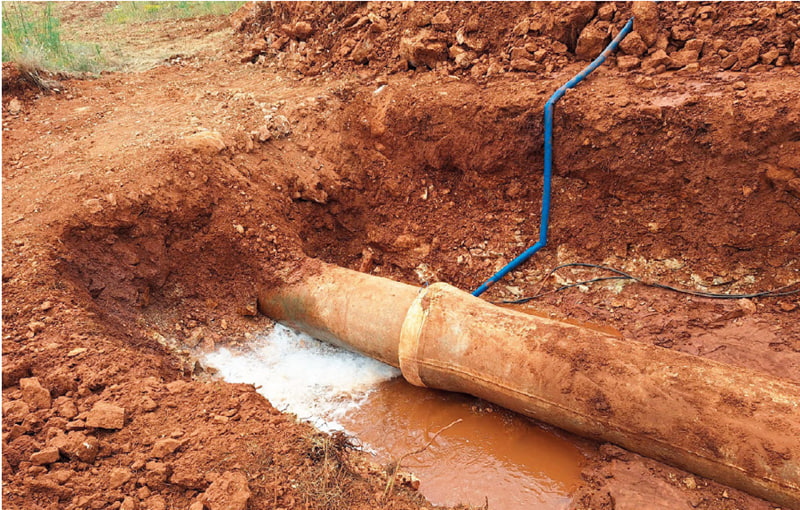© The introduction website of Vira Nisht Abgoon Company. All rights reserved
The Importance of Detecting Leaks in Water Transmission Pipelines for Environmental Sustainability
Introduction
Leaks in water transmission networks are among the most significant contributors to the loss of valuable water resources and often go unnoticed. While visible and accessible leaks in water distribution networks tend to receive more attention, leaks in transmission pipelines frequently remain undetected due to the remoteness and depth of these pipelines. Consequently, they are often poorly managed. This issue is particularly critical in areas facing water scarcity, where such leaks can have severe impacts on water resources and the environment.
Environmental Impacts of Undetected Transmission Pipeline Leaks
Undetected leaks in water transmission pipelines can significantly harm both the quality and availability of water resources. For instance, major leaks—such as one with a flow rate of 25 liters per second (illustrated in the image below), which equates to approximately 800,000 cubic meters of water per year—can impose an unmanageable strain on regional water resources, particularly during droughts or water stress periods.

Moreover, the loss of such large volumes of water contributes to an increase in CO2 emissions, exacerbating environmental challenges. For example, a similar leak can result in the emission of 394 tons of additional CO2 annually. This correlation stems from the energy-intensive processes required for water treatment, pumping, and delivery. When water is lost through leaks, the energy expended to process and transport it is effectively wasted, thereby increasing the carbon footprint of water systems.
Properly managing and detecting these leaks not only conserves water resources but also plays a critical role in mitigating the environmental impacts of water loss, contributing to the broader goals of sustainability and climate resilience.
In water transmission systems, significant energy is consumed to pump and transfer water from sources to points of use. When water is lost through leaks, additional water must be pumped to compensate for the loss. This process requires a substantial amount of energy, often generated from fossil fuels in conventional energy systems. The result of this energy consumption is the production of carbon dioxide (CO2).
On average, pumping 1 cubic meter of water consumes approximately 1 kilowatt-hour of energy, which produces around 0.5 kilograms of CO2. For instance, a significant leak with a flow rate of 25 liters per second (equivalent to 788,000 cubic meters annually) results in the consumption of massive energy and leads to the production of 394 tons of additional CO2 annually.
Challenges in Detecting Leaks
One of the primary reasons these leaks go unnoticed is the difficulty of pinpointing them accurately using traditional methods such as geophones and acoustic sensors. The large distances between access points and the substantial depth of pipelines make traditional tools ineffective in detecting leaks. Additionally, the lack of adequate standards and limited awareness of the advantages of in-line technologies exacerbate this challenge.
Opportunities for Water-Focused Companies
Despite these challenges, identifying and addressing hidden leaks in water transmission pipelines represents a significant opportunity for reducing water loss and improving environmental sustainability. Companies operating in the water industry can leverage advanced technologies to minimize water wastage and curb CO2 emissions. These efforts contribute to enhanced resource efficiency and reduced environmental impact.
Our Environmental Commitment
At Vina, we employ cutting-edge technologies such as the Smart Ball to effectively prevent water loss in transmission pipelines. These technologies not only help conserve limited freshwater resources but also reduce energy consumption and greenhouse gas emissions, fostering positive environmental outcomes and promoting ecosystem balance.
Our services focus on detecting and preventing hidden leaks, which alleviates the pressure on natural resources and helps preserve them for future generations. By doing so, Vina’s solutions address current water challenges and play a vital role in safeguarding Earth’s limited freshwater resources. Our commitment is to act as a catalyst for sustainability and the long-term survival of this essential resource.



